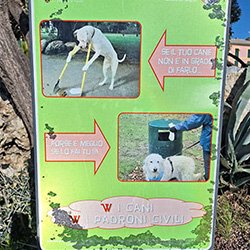When you register the pickup location on the smartphone app, you can see on a map just how many Uber cars are in the area and where they are at a given moment. Also, since the app displays an estimation of how long it would take to arrive at the pickup location, for example approximately 3 minutes, you avoid the scenario of calling a taxi but not having any idea when it will arrive. I remember that a long time ago on a weekend night it took 30 minutes to get through to call a taxi, then I had to wait an hour for it to show up.
Also, you get a fare estimate when you register the pickup location and destination, so you can cancel before committing if you think it’s too expensive. Knowing the fare beforehand is really convenient. When the regular roads are free of traffic and there are lots of Uber cars out, the fare is 30%–40% cheaper than a taxi. Rarely, when there aren’t many Uber cars out or it’s busy with lots of users, it can be more expensive than a taxi. In that case, though, I think it would also take time for a taxi to arrive.
In addition, after confirming the estimated fare and making the request, the driver’s name, type of car, and license plate is displayed. The car shown on the app’s map will actually start moving, so you can use the map to check where that car is at that moment. In my experience, the car always comes in 3 minutes at the earliest, but usually within 10 minutes.

Photo 1: This is the screen used to request a ride from the actual Uber app. You can check on the map how many Uber cars are running and where. The estimated fare is also shown.
Various types of cars are used for Uber in Australia, including 4WD since they are popular and in demand, mid-sized cars such as the Corolla and Golf, and station wagons. In fact, there are many different cars, such as luxury vehicles like BMW and Audi, and slightly older compact cars. Lately, users can choose the kind of car according to customer demand. There is Uber X offering general low-cost cars for 1–4 people, Uber XL offering slightly more expensive cars for 1–6 people, and Uber Select offering luxury cars.
The interiors are clean, and some cars even have free bottles of mineral water and services such as mints and candies. In Australia, all hotels and restaurants are smoke-free, so very few cars smell of cigarette smoke since so many Australians dislike it.
Usually passengers converse with the driver on the way to the destination since there are so many friendly people in Australia. I almost always use Uber on the Gold Coast, and I think the aura of the driver is slightly different in other cities. In my experience, though I talk with the driver the conversation is just idle chatter. Because I’m Japanese, I’m often especially asked questions like where I’m from in Japan, and they tell me things such as places they’ve visited in Japan and what they thought was wonderful about Japan.
Another convenient aspect about Uber is that you don’t have to pay on the spot because the fare is charged to a credit card registered with the smartphone app. You can immediately get out of the car once you’ve arrived at the destination, so when you get out you don’t have to pay. When the driver says something to you like, “Good-bye. Have a good night,” it feels as if you just got a ride from an acquaintance. Later, an email will notify you of the fare, which is around the estimated fare shown in advance, so it’s never actually very different.
This extremely convenient Uber has also recently started offering a delivery service called UberEATS that brings food ordered from restaurants. Compared to Japan, there are many Australians who don’t cook much, so this service has already become popular.
I look forward to seeing what kind of service Uber will offer next.






























































